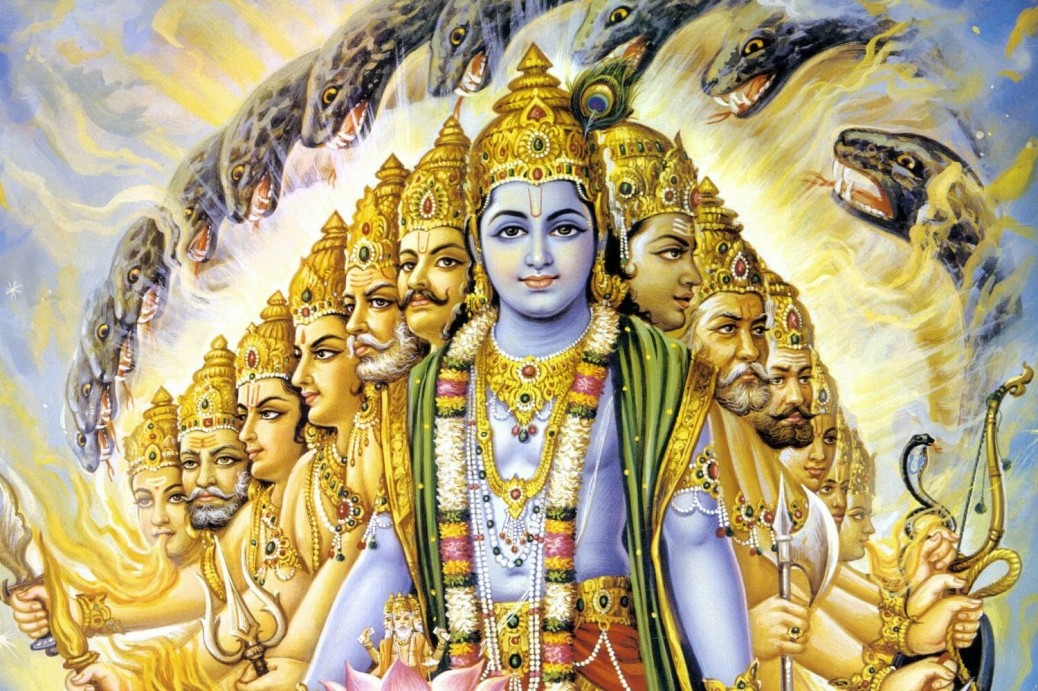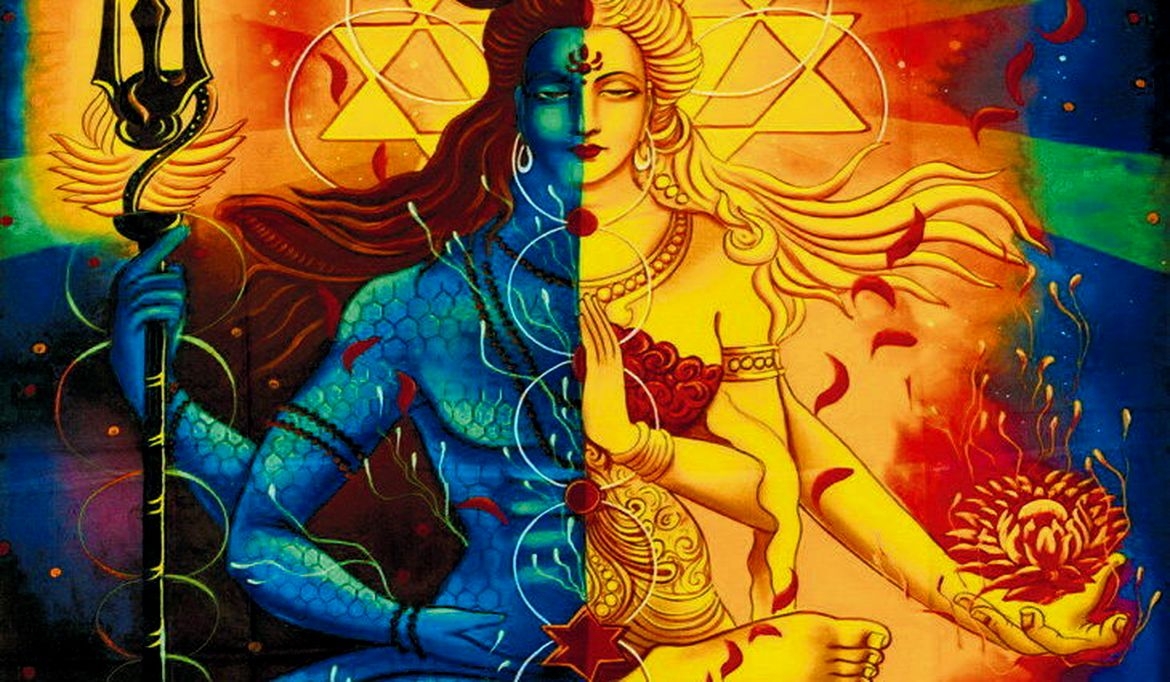Om Tat Sat – In Gita Verse 17.23 From the beginning of creation, the three words oṁ tat sat were used to indicate the Supreme Absolute Truth. These three symbolic representations were used by brāhmaṇas while chanting the hymns of the Vedas and during sacrifices for the satisfaction of the Supreme.
In Bhagavad Gita Verse 17.23, Krishna explains to Arjuna the of the words “Om Tat Sat” as symbolic representations of the Supreme Absolute Truth. These words have been used from the beginning of creation by Brahmins while chanting Vedicns and performing sacrifices to seek the satisfaction of the Supreme.
1. Om: Om is a sacred sound and symbol in Hinduism which represents the essence of the ultimate reality or Brahman. It is considered the cosmic sound of creation, preservation, and destruction. By chanting or meditating on the sound “Om,” one connects with the divine energy of the universe.
2. Tat: Tat refers to “that” or the ultimate reality. It signifies the omnipresent and all-pervading nature of the divine. Recognizing and acknowledging the presence of the ultimate reality in all beings and things helps one cultivate a sense of unity and oneness with the universe.
3. Sat: Sat represents truth, existence, and reality. It encompasses the eternal and unchanging essence of the divine. By aligning oneself with truth and living a life of integrity and righteousness, one attains spiritual growth and enlightenment.
The creation of Brahmins, Vedas, and Yajnas from the beginning of creation carries profound symbolic meaning. Brahmins are traditionally associated with symbolising knowledge and wisdom. In this context, knowledge encompasses the deep understanding of oneself beyond mere worldly information. Wisdom, on the other hand, represents a blend of maturity and innocence, allowing for the discernment of truth and the ability to make decisions based on higher principles. When knowledge and wisdom come together, they equip an individual with the clarity and insight needed to navigate life’s journey, fostering innocence and purity of heart.
Vedas, as sacred scriptures and spiritual teachings, serve as guiding lights for individuals on the spiritual path. They contain profound wisdom and insights aimed at illuminating the path of righteousness and enlightenment. Being watchful towards action involves being mindful and conscious of one’s deeds, ensuring that they align with the teachings of the sacred scriptures and contribute positively to one’s spiritual growth and evolution.
Yajnas represent rituals and offerings made to the divine. In a broader sense, they signify the act of selfless service and surrender to a higher purpose. Every moment becomes an opportunity to drop or sacrifice our ego – letting go of the attachment to personal desires and egoistic tendencies, and instead, offering our actions and intentions to a higher power. By practising selflessness and humility, we move closer to our divine essence and experience a deeper connection with the universal consciousness.
Therefore, the creation of Brahmins, Vedas, and Yajnas symbolises the path towards spiritual growth and realisation, emphasising the importance of knowledge, wisdom, spiritual teachings, mindful actions, and selfless service in transcending the limitations of the ego and aligning with the divine will.
Om Tat Sat. The concept of God that-form and thatness can also be understood through the Upanishads. One of the key teachings from the Upanishads, which encapsulates this idea, is ‘Tattvamasi Shwetaketu’ – You are the same as Shwetaketu, he is no different. How can one experience this? ‘Tattvamasi Shwetaketu’ translates to ‘You are that, Shwetaketu,’ highlighting the unity between the individual self (Atman) and the supreme reality (Brahman). The understanding of this unity leads to self-realisation and the profound experience of oneness with the divine.
To experience this truth, one must cultivate self-awareness, engage in introspection, and connect deeply with the divine through practices like meditation, contemplation, and virtuous living. By embracing the principles of Om Tat Sat, understanding the teaching of Tattvamasi, and recognising the interconnectedness of all existence, one can transcend the ego and merge with the infinite consciousness of Sachchidanand Ghan Brahma.
Ultimately, experiencing the oneness with Sachchidanand Ghan Brahma requires sincere devotion, self-inquiry, and a profound understanding of the unity of the individual soul with the Supreme Truth. Through spiritual practices and inner reflection, one can realise their divine nature and experience the eternal bliss of unity with the Absolute.
Krishna asserts that all who have delved into the spiritual realm have discovered the unified answer, unequivocally – Om Tat Sat.
Tags: Om Tat Sat




